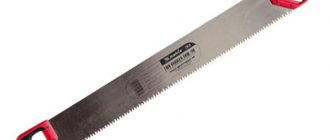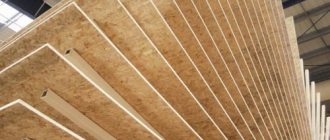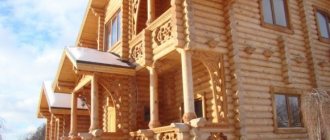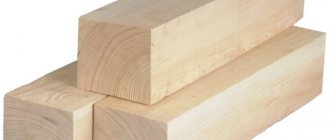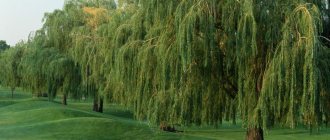Nail shapes
Their names correspond to geometric shapes due to their external similarity. The optimal form selection option is made taking into account three criteria:
- Length;
- Natural shape (straight parallels, trapezoid, rounded shape);
- Cuticle shape.
It is recommended that the shape of the tips of the nails follow the shape of the cuticle. Thus, the optimal choice is maximum compliance with the natural form, with slight correction depending on the client’s preferences and type of daily activity (practicality).
List of the most popular nail shapes:
- Circle;
- Oval;
- Square: crisp and soft;
- Square oval;
- Almond-shaped;
- Triangular;
- Ballerina.
Based on these options, you can make a number of others by adjusting the combination of proportions.
Length selection
How to choose the right length when performing a manicure:
- It is necessary to compare all the nails from the cuticle line to the free edge, and select the average desired length option, which can be designed on all fingers.
- If the client wants to leave the maximum length, then comparing all the fingers, it is necessary to choose the shortest one and align all the others according to it so that the nails are the same on both hands. If one of the nails is broken or damaged, then we select the next one with the minimum length, focus on it, and for the broken one we perform restoration with gel or acrylic.
- The second case is when the client wants to completely remove the length. In this situation, you need to focus on the length of the nail bed, without the free edge. The longest nail bed on 8 nails, excluding the big ones, will become a guide for the rest of the fingers. You may have to leave some of the free edge on some of your nails so that they all look the same when you apply the color.
- We separately compare 8 fingers on both hands without thumbs. We compare the thumbs only with each other, only approximately adjusting them proportionally to the rest.
When comparing, fingers are placed next to the alignment along the cuticle line. And already from the cuticle we look and select the total length of the nails for everyone and for each pair on both hands. The same length is selected not in mm, but proportionally.
- The largest one should be left on the middle finger, since the plate on it is naturally the shortest.
- Behind it, align the index and ring fingers equally.
- The length on the little finger will be the shortest, as it naturally has the longest nail bed.
If the client walks constantly, and the last time a certain length was already set, then at each next visit it needs to be selected and aligned again. Nails grow at different rates on different fingers and different hands, so it’s worth taking this into account.
The length of the plates should be the same from the cuticle line, regardless of the length of the immediate free edge. Under the coating, the free edge and smile line will not be visible. It follows that you can't just leave 1.5 or 5mm on each nail and expect them to look the same.
Sawdust as a building material
Sawdust, for most people, is simply waste from sawing wood. It can be found in large quantities at any woodworking factory or sawmill.
Very often it is simply disposed of. However, sawdust is very suitable as an alternative to purchased building materials.
Sawdust has all the qualities of wood, which, in general, it is, but at the same time it has its advantages and disadvantages.
1. Cost.
To be more precise, its absence. Sawdust will be gladly given away for free at any woodworking enterprise. Therefore, the costs of its acquisition can only include the funds spent on its removal.
2. Environmental friendliness.
Sawdust, like any wood, is a material of natural origin, therefore it is environmentally friendly and not harmful to human health.
3. Thermal insulation.
This material retains heat very well, so it is often used as insulation for walls.
1. Poor fire resistance.
Like any wood material, sawdust burns well.
2. Poor resistance to moisture.
Poorly dried sawdust can quickly rot, so before using it in construction, it should be thoroughly dried. Sawdust is mainly used as additional insulation, mixing it with concrete. This composition is used to make floor screeds and blocks for the construction of various buildings.
READ ALSO: Ideal environmentally friendly insulation material
But these are not all areas of its application. Residents of the private sector are very familiar with this type of courtyard buildings, popularly called “bulk” buildings.
These are mainly insulated buildings (flocks) for keeping livestock. Building a flock in this way takes little time and requires almost no financial investment.
A person who is not even very familiar with construction can build such a structure.
What is required for this?
Boards. You can use regular good quality croaker.
Sawdust. You should use medium-sized crumbs, well dried.
Logs. Usually four pieces are used as the basis for the structure.
Nails. Will be needed for nailing boards to logs.
1. On a pre-prepared site, mark the width and length of the future building. Logs are dug into the corners. This will be the basis of the structure.
2. Boards are nailed to the logs on both sides, forming the future wall. The design resembles formwork for pouring concrete, only instead of concrete, wood chips (sawdust) are poured between the boards.
3. After the foundations for all four walls have been formed, the first layer of sawdust should be poured between the boards. It should not exceed one meter in height. After filling the first layer, it should be left for some time. This is required for shrinkage of the chips.
READ ALSO: Growing pepper seedlings at home
In order not to waste time, you can compact it yourself, using heavy tools, or just walk on it. The next layer should be filled only after compacting the first one.
4. After filling the walls, you should wait a day before covering with a roof. This is required to check the compaction and shrinkage of the sawdust. If necessary, it can be topped up.
The roof, floor, and other finishing of the building can be done in different ways, at the personal discretion of the builder.
Thus, the result is a fairly warm and comfortable room for pets.
There are many different ways to use sawdust in construction. This only confirms its relevance and uniqueness.
Sawdust
The sawing is always performed with orientation towards the central axis - a vertical straight line drawn along the length of the plate from the cuticle to the free edge.
The purpose of the sawdust is to make the parts of the plate symmetrical from the central axis.
The form is filed only to the ingrowth points along the edges of the plate. Usually there is a slight expansion in the area of growth points. It is necessary to remove the protruding width, adjust the shape, creating parallel straight lines on the sides, and at the same time not make it too narrow or bend the overall shape.
What should be the abrasiveness of a sawdust file? Suitable options are 180 x 200, 200 x 200, 200 x 220 grit. Less than 180 is too rough, and more than 220 is already a grinder. The file should be wide and slightly arched for ease of use. If it is new, it is necessary to treat the edges with a buff so that they do not cut the skin.
Manicure files - we understand their types, shapes and types
Definition of the word “Experience” according to TSB:
Experience is a sensory-empirical knowledge of reality based on practice, the unity of knowledge and skills. In the history of philosophy, the views of Empiricism and Sensualism, according to which philosophy was interpreted as the only source of knowledge, became widespread. Representatives of idealistic empiricism (J. Berkeley, D. Hume) limited perception to the totality of sensations and perceptions, denying that perception is based on objective reality. Materialist empiricism (F. Bacon, T. Hobbes, J. Locke, D. Diderot, C. Helvetius) proceeded from the fact that the source of oxygen is the material world. “From the history of philosophy it is known that the interpretation of the concept of experience divided classical materialists and idealists” (V.I. Lenin, Complete Works, 5th ed., vol. 18, p. 153). In contrast to empiricism, representatives of rationalism (R. Descartes, B. Spinoza, G. Leibniz) believed that logical thinking cannot be based on philosophy, because it gives unclear, vague knowledge, leading to misconceptions, and it was believed that the mind supposedly has the ability to comprehend the truth directly, bypassing the sensory-empirical level of knowledge. In pre-Marxist philosophy, the problem of philosophy was considered most deeply in German classical philosophy. I. Kant criticized the rationalists' position on intellectual intuition, as well as the attempts of the sensualists to derive general concepts from a simple set of feelings. data. According to Kant, people have a priori (pre-experimental) forms of reason, thanks to which the synthesis of sensations is carried out. This emphasized the active role of the knowing subject. Hegel explored cognition as an evolving multi-level process. O. is derived from the movement of consciousness, which sets a goal. Hegel believed that since the achieved result of an activity does not completely coincide with the set goal, in the process of comparing what is desired with what has been achieved, a transformation of views on the subject occurs, and new knowledge about the subject appears. This process constitutes O. In bourgeois philosophy of the 20th century. Subjective-idealistic concepts have become widespread, often bringing the concept of O. to the forefront in epistemological terms. At the same time, it is argued that the monistic views of both materialists and idealists should be replaced by a more perfect “neutral” monism, which eliminates the categories of matter and consciousness from philosophical circulation, replacing them with the category of “pure experience” (Machism). V.I. Lenin in his work “Materialism and Empirio-Criticism” showed the inconsistency of such concepts, which essentially continue the line of Berkeley and Hume (see ibid.). Varieties of the subjective-idealistic interpretation of philosophy are Pragmatism and Instrumentalism (O. as an “instrumental” plan for using things), Existentialism (O. as the inner world of the subject’s direct experiences), Neopositivism (O. as various states of consciousness of the subject, interpretation of the question of objective reality as a source of O. as a pseudo-question). In contrast to idealism and in contrast to contemplative metaphysical materialism, dialectical materialism considers philosophy as something derived from objective reality. O. is conceived both as a process of active, transformative human influence on the external world, and as a result of this influence in the form of knowledge and skills, as a process of interaction between a subject and an object. The concept of observation essentially coincides with the category of practice, in particular experiment and observation. On their basis, knowledge is formed as a result of cognition, including the totality of historically established knowledge. The accumulation and transmission of wealth from generation to generation constitutes an essential characteristic of social development. It is objectified in subject and linguistic forms, in cultural values. O. as a person’s practical activity and its results reflect the level of mastery of the objective laws of nature, society, and thinking achieved by people at a given stage of their historical development. Marxism-Leninism is a scientific generalization and justification of the revolutionary struggle of the working class and all working people for social liberation, the construction of socialism and communism, and the development of science and culture. V. G. Panov.
Shape square
View this post on Instagram
Posted by Manicure | Talnakh (@_andreeva.tv)
This is the simplest form for sawdust. There are two types:
- Soft square;
- Clear square.
It is characterized by two edge lines parallel to the central axis and a clear perpendicular line of the free edge relative to the axis line.
With a clear square, the corners are clear, but not sharp. When soft, slightly rounded, but without disturbing the perpendicularity of the edge to the central axis.
In what order should you cut the square?
- First, use a nail file to remove the length perpendicular to the central axis. The file works at an angle of 90 degrees in a straight line with movements left and right.
- Here it is important to grasp the client’s finger in such a way as to ensure good visibility of the direction of the sawdust and not “overwhelm” the perpendicular direction.
- The next stage is sawing of parallel, smooth edges in relation to the central axis. To do this, a wide file is inserted under the plate, brought to the point of growth, installed parallel to the axis and sawing is made.
- We repeat on the other side. Work carefully so as not to saw through the plates at the point of growth; work only up to this point, starting the file from below. Do not run the saw over the plate in the corners so as not to make cuts.
If the nails grow in a trapezoid from the growth points, expanding towards the free edge, then as they grow in length they either sharply slant down or “fly up” upward.
With this initial shape, it is recommended to make the sawdust square, but to create even side parallels, you will need to narrow the nails a little towards the free edge so that they do not look like “shovels”. Exactly as much as there is expansion from the cuticle zone to the growth points. It’s as if we are adjusting the width to the original one at the cuticle. From the side, such a square will also look narrowed from the side parallels.
Oval and almond
They are characterized by the complete absence of angles when making sawdust, only arcs and semicircles. Oval is not for everyone. If initially the nail has a round cuticle, or itself is barrel-shaped, then when we file an oval on the short free edge we will get a circle, which does not always look beautiful. An oval is suitable for triangular or square nail shapes near the cuticle.
When cutting an oval, it is necessary to estimate the distance from the growing point to the free edge so that there is enough length to round and eliminate corners. If, when filing an oval, the length is not enough, then we get an angle, a sharp refraction from the growing point towards the free edge.
This sharp refraction angle will be very noticeable from the side. Therefore, it is better to recommend the oval to clients with low-set growth points. Then, when sawing, we get an elongated roundness, without sharp angular bevels.
How to file an oval with a file:
- We place the file under the free edge of the plate from below, pull back the side roller so that it does not interfere, and begin sawing from the growing point towards the central axis along the arc line. Having reached the top point of the length along the central axis, we move to the second side and repeat the oval cut from the point of growth to the central axis. The primary task is to create smooth oval side parallels without corners, sagging or straight lines.
Almonds are sawn using the same principle, only more narrowly. You can call the almond shape a narrowed oval. It should also not have corners, straight lines or sharp bevels along the side parallels to the center.
- Almond-shaped sawdust is carried out from the lateral growth points in semi-arcs from below towards the central axis. Symmetrical.
- The more you need to narrow the oval into an almond shape, the greater the distance required from the growing point to the tip. This way we get a smooth transition and an elongated taper.
When viewed from the side, arcs from the growth points should be clearly visible, and not a sharp narrowing with beveled corners.
Also, we will not get a beautiful “almond” if the shape of the nails itself is initially flat, without a pronounced upper arch from edge to edge. This problem can only be solved by removing the straight flat edge, and building up an artificial arch on the upper or lower form or tip.
The benefits and harms of sawdust
The benefits of sawdust for soil and plants are due to the many properties of this material, but the following abilities are primarily valued:
- when mixed with soil, small shavings increase its looseness, air and moisture permeability, without causing moisture retention;
- in the process of wood decay, carbon is released, which has a positive effect on soil microorganisms;
- even a one-time application of sawdust normalizes the structure of the soil, especially if it is heavy clay;
- All actions taken together improve the development of the plant root system.
Related article:
Preparing the garden for winter and the future harvest: 6 mandatory things to do in the garden in the fall
The most relevant is the introduction of wood chips into soils with low nutritional value and increased “fatigue” after long-term use for growing the same crop.
At the same time, sawdust may be contraindicated for soil and plants, since the harm and benefits of such material directly depend on two factors:
- the state of the wood waste itself - in its fresh form, it can damage the root system, since during the process of decay it begins to release a lot of heat, which heats the soil and burns the roots;
- ability to increase the acidity of the soil and extract nitrogen from it, therefore, on acidified lands with a lack of nitrogen, they must be added together with lime and nitrogen additives.
If not fresh, but completely rotted sawdust is used in a garden with low soil acidity, then their benefit or harm to plants will be determined by the correctness and appropriateness of use. In this regard, the following points should be taken into account:
- when mixing shavings with humus and garden soil, the structure of dense soil will be improved due to saturation with moisture, air and nutrients, but for light fertile soils such additives are not required;
- rotted wood materials contain a lot of phosphorus and calcium, which must be taken into account when applying similar fertilizers;
- on soil with moderate acidity, it is better to apply sawdust into holes or furrows during planting, since slight acidification will ensure better seedling growth;
- in acidified areas, the planting holes are first watered with lime milk, and the sawdust itself is sprinkled with ash.
Related article:
Storing seeds without loss of germination: 5 simple and convenient ideas
Rotted wood waste does not reduce the amount of nitrogen, so it is not necessary to regulate it with additional additives.
Triangle and stiletto
View this post on Instagram
Publication from NAIL EXTENSIONS | Moscow (@enik.ur_school_studio)
Most often it is performed on extended plates and is characterized by a sharp, elongated tip. Also called "cat's claws". You will need a medium to long sawdust length. It is performed as for the almond shape, but without rounding, but with a sharp angle, starting slightly above the growing point, towards the central axis. For sawdust, it is necessary to have a pronounced semicircular arch in the architecture of the plate, otherwise there will not be a beautiful transition in length, and the nails will not be strong.
A wide file is inserted under the nail from the growing point and first the lateral parallels are drawn. From them, a light half-arc is created with a file, and from the middle of the length to the tip, an acute angle is filed.
When is it best to use
The timing of the use of such material depends on the goals set:
- the use of sawdust in the garden in the fall is intended to improve the structure, composition and microflora of the soil, as well as for mulching plantings in order to create a protective shelter for the winter;
- in the spring, rotted shavings are brought into the planting holes and used to create paths in the beds;
- all season - laid as mulch to control weeds and pests.
Before using sawdust in the garden in the fall, no preparatory work is required. They are simply brought in for digging, since over the winter they will have time to rot and do their job. When used in spring, the shavings are pre-mixed with organic matter or bifidobacteria to accelerate the decay process.
Related article:
The benefits of acetylsalicylic acid for plants: ways to use aspirin in the country
Ballerina
View this post on Instagram
Publication from Yana Belova




